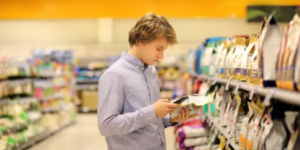PET, or polyethylene terephthalate, is a safe, hygienic and sturdy material. It doesn’t react with food or liquids that come into contact with it and is resistant to attack from microorganisms.
 It can be thermoformed to make trays and blister packaging or bottles for soft drinks, detergents and other shopper products. It’s also completely recyclable. For quality PET packaging materials, check this out.
It can be thermoformed to make trays and blister packaging or bottles for soft drinks, detergents and other shopper products. It’s also completely recyclable. For quality PET packaging materials, check this out.
Lightweight
PET is a versatile plastic material that’s used for countless packaging applications. It’s safe, strong, shatterproof and 100% recyclable into the same bottles it’s made from.
Bottles and containers made from PET are widely used for beverages like sodas, water and juices. It’s also often used for non-food products such as toothpaste, mouthwash shampoo and conditioner.
PET doesn’t transfer chemicals into the packaged product or the environment, so it can safely be used for food packaging. It’s also inert and does not biodegrade biologically, preventing leachate formation.
Additionally, PET is free of plasticizers and stabilizers that may transfer to the food or beverage it contains. It makes it a safe and attractive option for food and beverage packaging. It is also heat and freezing-resistant.
Transparent
Polyethylene terephthalate (or PET or PETE 1) is one of the most common plastics used for packaging. It’s clear and strong, with natural oxygen and carbon dioxide barrier properties. It makes it ideal for beverage bottles and other clear plastic containers, such as trays and domes holding food items.
The American FDA and many regulatory bodies worldwide approve PET bottles for use with food and beverages. PET is also recyclable, which helps reduce the amount of plastic that ends up in landfills or in the ocean, where it takes thousands of years to break down. The recycled version of this plastic, rPET, can be used to make textiles, carpeting, fibres and more. It can also be mixed with other materials to improve their performance. For quality PET packaging materials, check this out.
Resistant to Moisture
PET does not absorb water, making it a durable and sturdy plastic. It also resists attacks from microorganisms and other chemicals, which helps extend the shelf life of foods and beverages in it.
PET and its sister plastic, PETG, are approved by global health authorities for use in food, beverage, cosmetics and pharmaceutical packaging. They do not contain BPA, dioxins, cadmium or endocrine disruptors.
PET resin pellets are melted into a liquid using heat and then can be shaped into various containers. They are an excellent choice for custom food packaging, such as deli sandwiches and salad clamshells. They can also be used to make thermoform trays and blister packages. In preventing crystallization, terephthalic acid can be replaced with isophthalic acid or CHDM. It creates a kink in the PET chain and slows or prevents crystallization.
Heat Resistant
You’ve probably seen PET plastic containers, from water bottles to shampoo and soda bottles. You’ve also likely seen it in your fridge, as beverages packaged in PET can stay cold for a long time.
PET is recyclable and does not transfer chemicals to food products, making it a safe option for food packaging. Many other plastics used for packaging contain additives like plasticizers and stabilizers that can migrate into food products, but PET is free of them. For quality PET packaging materials, check this out.
Glycol-modified PET, or PET-G, has improved processing characteristics such as higher elongation rates and lower glass transition and melting temperatures. It also enhances chemical resistance and toughness. It makes it the ideal choice for high-strength, transparent and heat-resistant food packages. Its strength-to-weight ratio means more products can be delivered in less packaging, reducing fuel consumption during transportation.
Recyclable
PET bottles can be recycled over and over again, making them a sustainable option for packaging. When containers are returned via a recycling program, they’re sent to a facility that sorts and cleans them. The washed material is then melted and shaped into preforms for new PET bottles. This process can also be used to make trays and clamshells. The material is known as recycled PET, or rPET. It can be mechanically recycled using a chain extender to raise the intrinsic viscosity (IV) to match virgin PET or chemically hydrolyzed and refined into re-polymerized monomers for lower-grade products.
It is one of the many reasons why rPET is becoming increasingly popular. It can be reused to create various products, including polyester clothing, carpets and other textiles.
